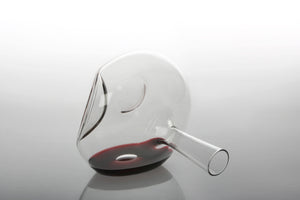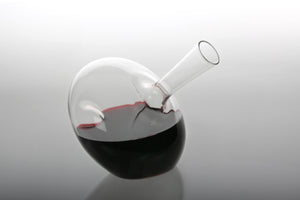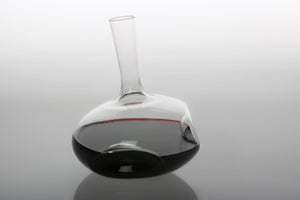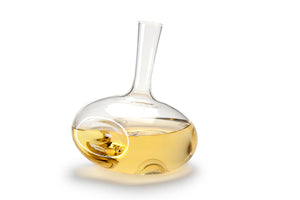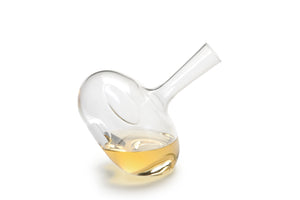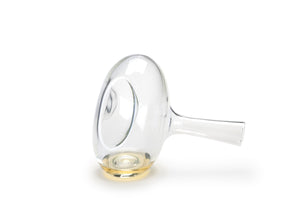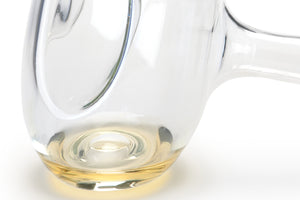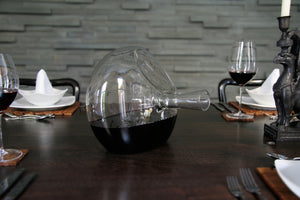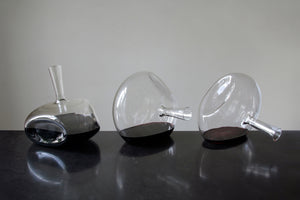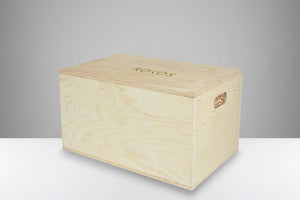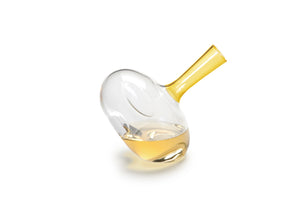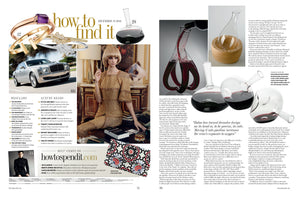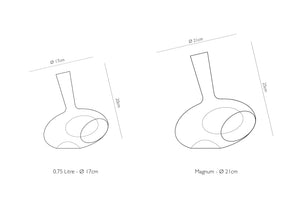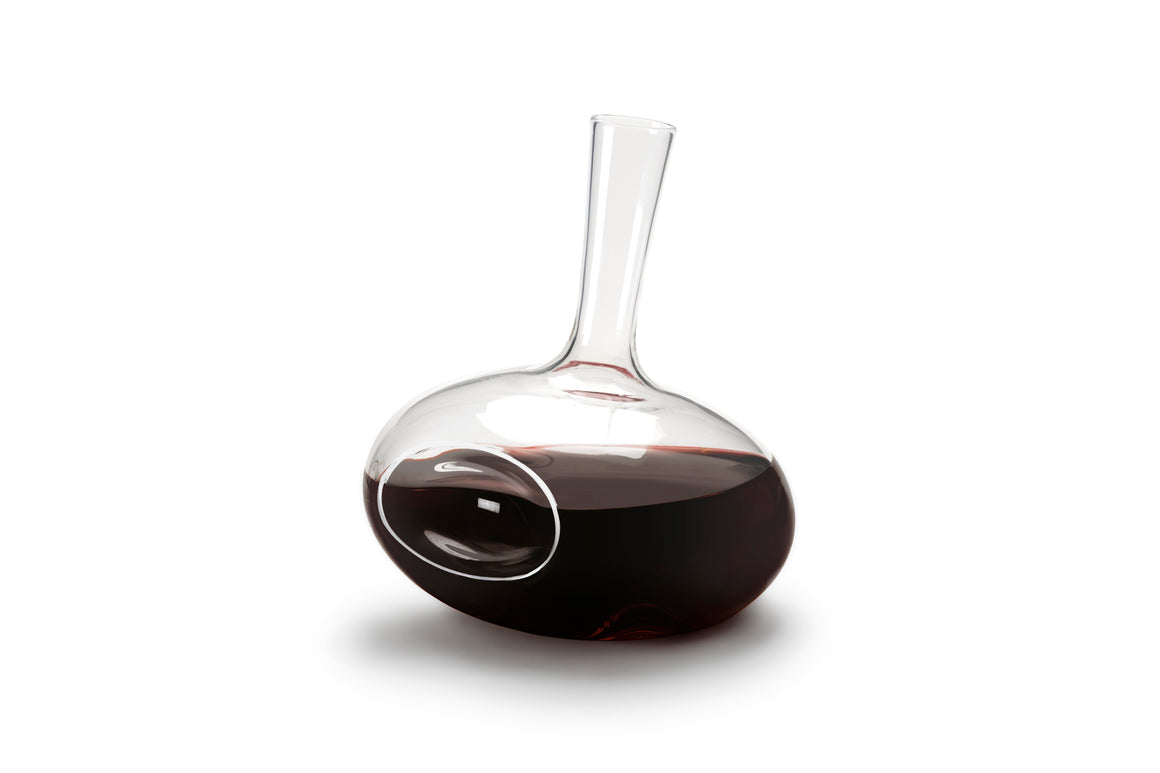13˚ 60˚ 104˚ magnum decanter (1.5 litres) Ø 21cm
€702,95
-
13˚ 60˚ 104˚
Borosilicate glass.
25cm tall, 21cm diameter.
RedDot Design Award Winner.
Clear edition numbers 109 to 117 are available.
Yellow limited edition of 40. The second of two studio samples is available.
Mouth-blown and formed by hand without the use of moulds in Slovenia. Decanters are produced in runs of 20, no more than once a year. Each piece is hand engraved in Mayfair, London, with its unique production number and accompanied by a Certificate of Provenance (please email us to tell us how you would like the owner's name to appear on the certificate). Decanters are protected with wood-shavings and are delivered in a wooden wine-box. Please see personalisation engraving options here.Why 13° 60° 104°? The three possible angles at which the decanter can sit.
Some say that at 13 degrees the decanter begins the evening sober. As drinking progresses, at 60 degrees the decanter is a little tipsy. By the end of the evening it sits at a drunken 104 degrees.
Featured in The Times LUXX, Nowness, The Sunday Times Style Magazine, the Financial Times How to Spend It, Damn magazine and the Independent.
-
CLEANING
Rinse with warm water. Dry with a tea towel and allow the remaining water inside to drain by placing the decanter upside down safely inside the top of a flower vase or similar, or out of the way in a corner. The final drops may also be removed by inserting a thin bone dry tea towel as far as it will go using a twisting motion and leaving it to one side to absorb the droplets. Stubborn deposits may be removed by using decanter cleaning balls. Some more ideas for cleaning glassware may be found here, written by of Daniel Primack. -
BOROSILICATE GLASS
Borosilicate objects are free blown on a lathe by a lamp worker, using the same processes used to blow scientific laboratory glassware (chemistry apparatus).
Borosilicate glass is more resistant to thermal shock than other glass. Borosilicate is referred to as 'hard glass' and has a higher melting point (approximately 1650 degrees Celsius) than 'soft glass'.
Because pieces are hand made, there is variation between each object and small air bubbles sometimes form, normally in the base - a desirable sign that they are not produced by machine.
Because of the incredible difficulty in making a decanter and our exceptional standards, we remove a number of factory seconds from each batch.
More about making here. -
EXPOSE TO AIR
Wine evolves with age – constantly changing, gaining complexity. But its full range is rarely experienced.
Wine changes most once the cork is out, once air touches the liquid. The flavour transforms. But all too often the bottle is empty before the wine reaches its peak, because the rate at which the wine is drunk is greater than that of the transforming flavours. It is good to pour the wine so that it runs down the inside edge of the neck, rather than straight down the middle, into the bottle: this way, as the wine reaches the body of the decanter, it runs down the inside wall in a thin sheet which exposes all of the liquid to air causing it to aerate beautifully.
"Decanting is so important to let wine breathe. We have never seen such a practical yet creative solution to wine presentation and decanting."
Daniel Primack - Winerackd, London.
-
0.75 LITRE & MAGNUM
0.75 litre -
The 0.75 litre will accommodate your bottle and give the liquid plenty of space to breath. Designed to be practical, compact and lightweight it fits in the hand easily. (We suggest to hold the body of the bottle and place the thumb inside the 'punt' at the bottom of the decanter.) Please see the dimensions in the diagram on this page. If you would like to make more of a statement, we would suggest the 13˚ 60˚ 104˚ magnum, which also elegantly accommodates a 0.75 litre bottle.
Magnum -
The magnum decanter holds a magnum bottle in the upright position (at 13˚), a 0.75 litre bottle in the middle position (at 60˚) and the lower position (at 104˚) indicates a half bottle. However, the magnum decanter also looks good holding 0.75 litres in the upright position at the 13˚ angle.
The decanters are designed to be as small as they can be, whilst still delivering optimal performance. If the diameter were to be any smaller, an air trap would be created when the decanter contains a full bottle of its intended format. This would result in a 'glug' during the first part of the pour, which is charming when pouring from a wine bottle, but undesirable in a decanter.
OHIM Design Registration number: 002148510-0001
UK Design Number: 90021485100001
USA Design Patent number: US D727,670 S
China Design Patent number: ZL 2013 3 0120618.8
Hong Kong Design Registration Number: 1200863.3
Wine consultant - Arno Maasdorp of the Saltoun Supper Club
White wine decanters - photographed by John R Ward.
















